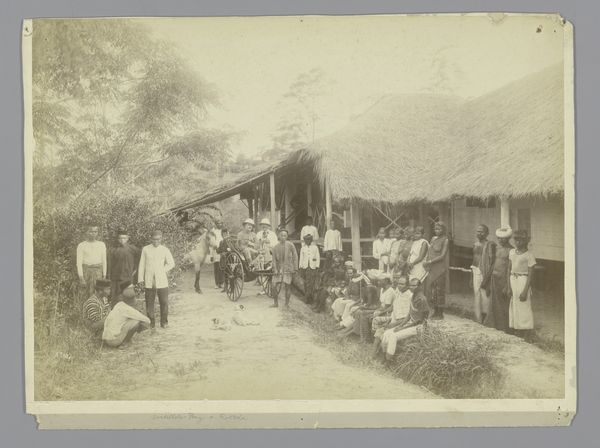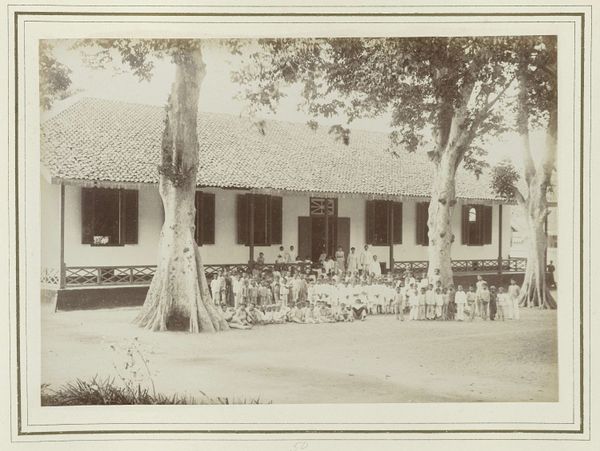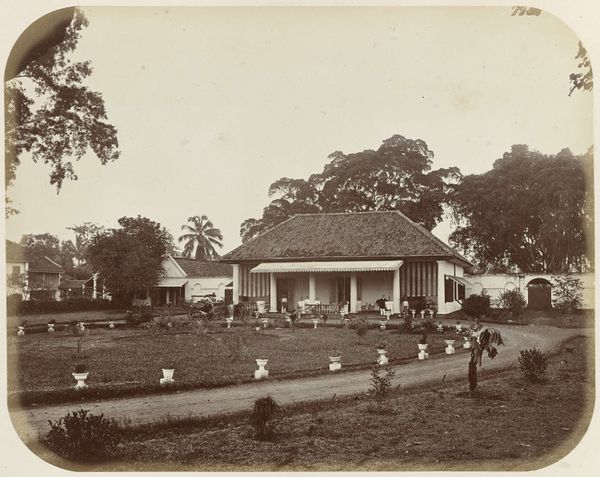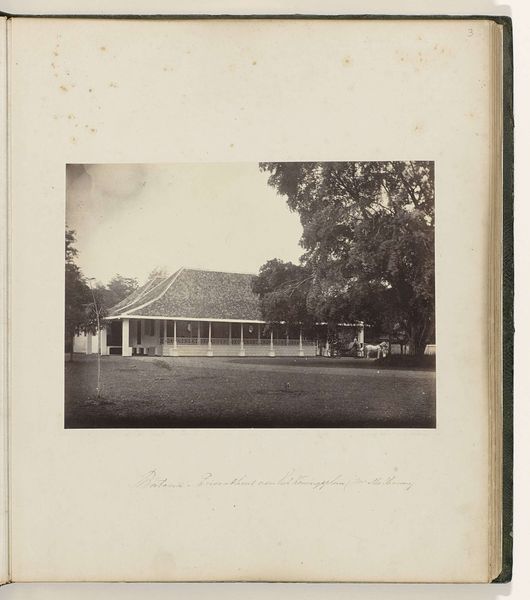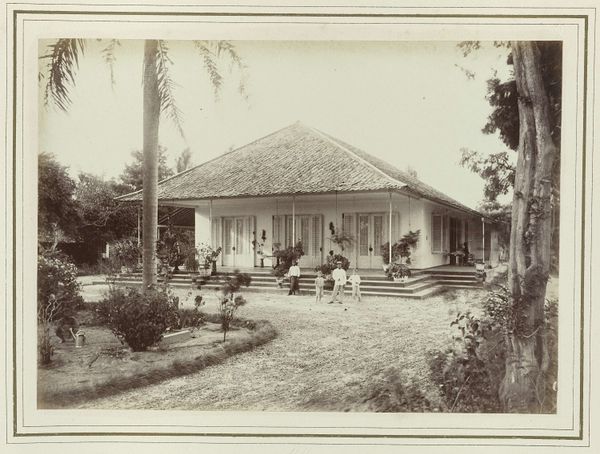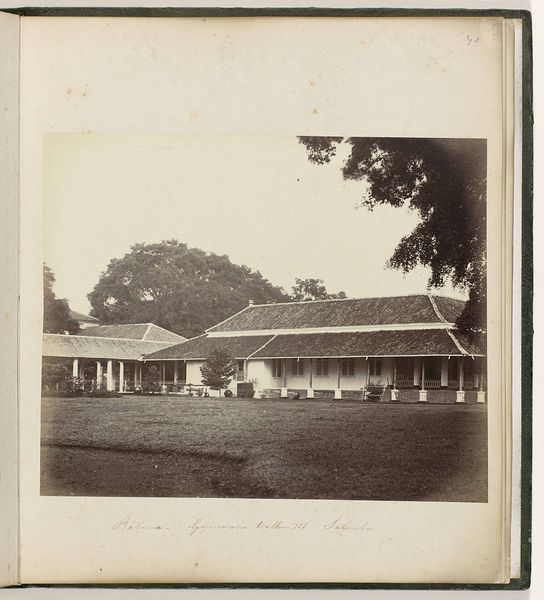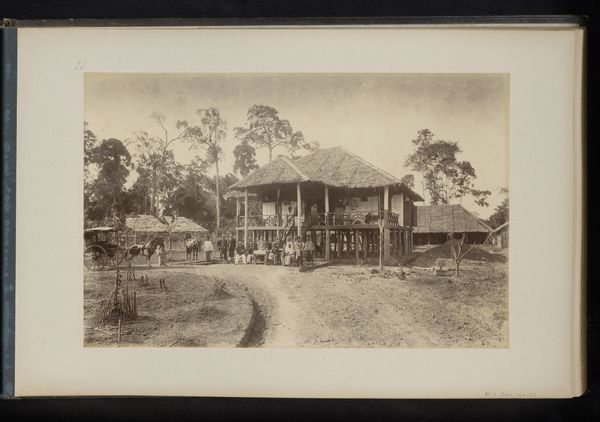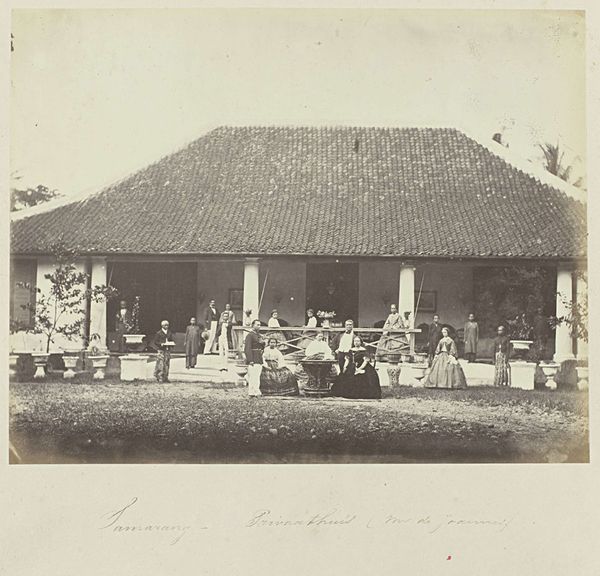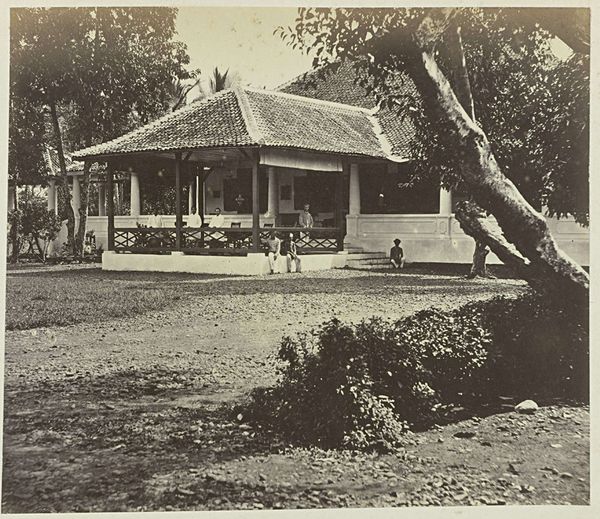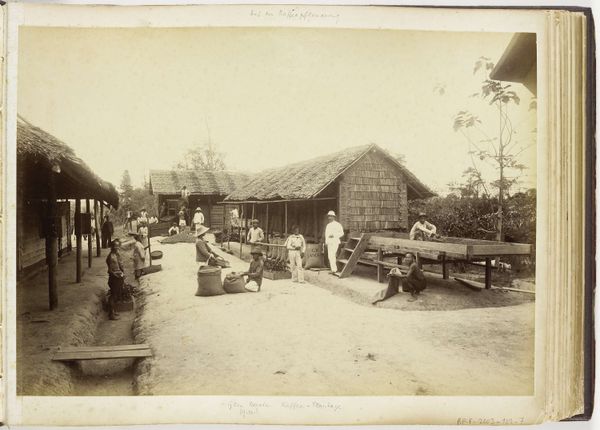
Gezicht op een woning met Engelse militairen en Indiase bedienden, mogelijk in Afghanistan 1878 - 1890
0:00
0:00
photography, albumen-print
#
landscape
#
photography
#
orientalism
#
albumen-print
Dimensions: height 227 mm, width 289 mm
Copyright: Rijks Museum: Open Domain
Editor: Here we have a photograph entitled 'View of a house with English soldiers and Indian servants, possibly in Afghanistan', created sometime between 1878 and 1890 by John Burke, using the albumen print process. What I notice immediately is how staged it seems, the careful placement of everyone... it almost feels like a set piece. What do you see in this image? Curator: I see a stark illustration of the material relations of power. The albumen print itself – think about the labor involved in its production, from the harvesting of eggs for the albumen to the meticulous darkroom work. It represents a Western technology deployed to document and, in a sense, consume the colonial subject. Consider the very act of Burke, a British photographer, capturing this scene. Editor: You're focusing on the materiality and production. But isn't there also an artistic intention? Curator: Artistic intention is inextricable from material conditions. The staging you mentioned isn't just aesthetic; it reinforces a power dynamic. The English soldiers are positioned with an air of authority, while the Indian servants are carefully arranged around them. It’s not just about what is depicted but how the means of depiction—the photographic process, the print's distribution—contribute to a specific ideological project. Notice how the materials themselves, imported technologies, and the subjects documented reflect and create power. Editor: So, you're saying the photograph is more than just a picture; it's a record of a system of labor and control. I guess that makes you consider who is missing as much as those who are included in this "record". Curator: Exactly! Looking closely at art is not only seeing beauty and esthetic forms, but considering the work involved and the conditions under which it appears. Editor: This has opened my eyes to see the work in new light, beyond the subjects.
Comments
No comments
Be the first to comment and join the conversation on the ultimate creative platform.

